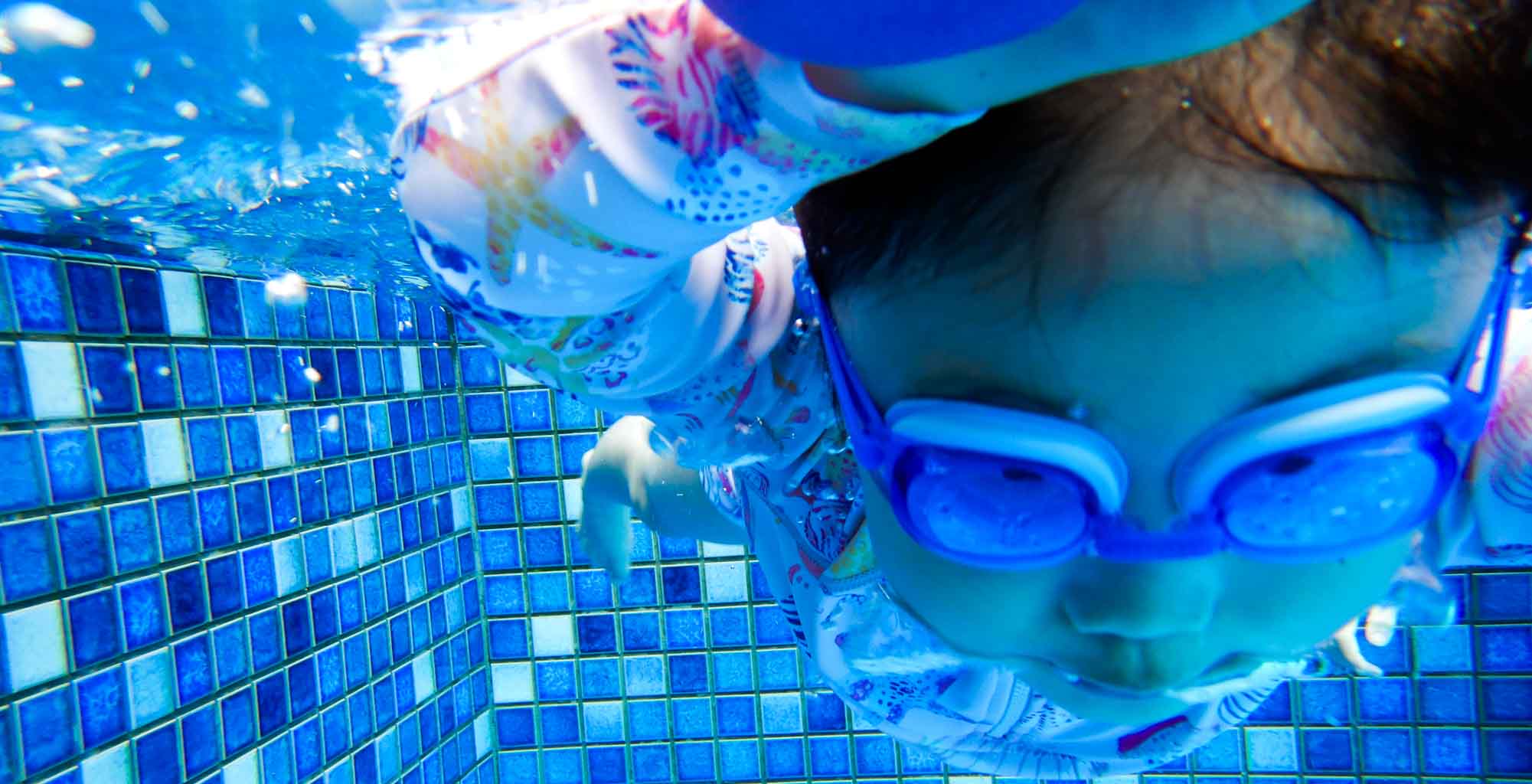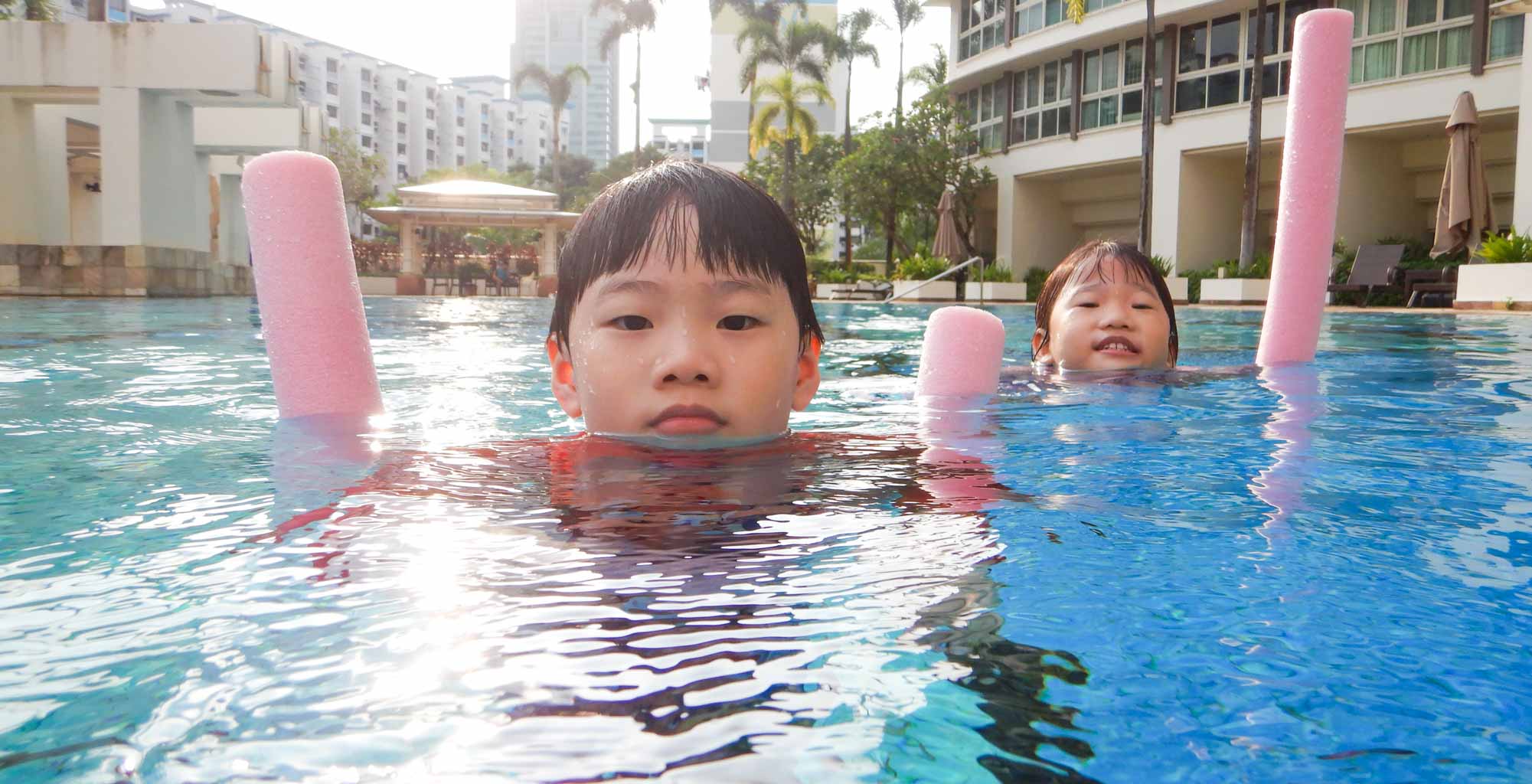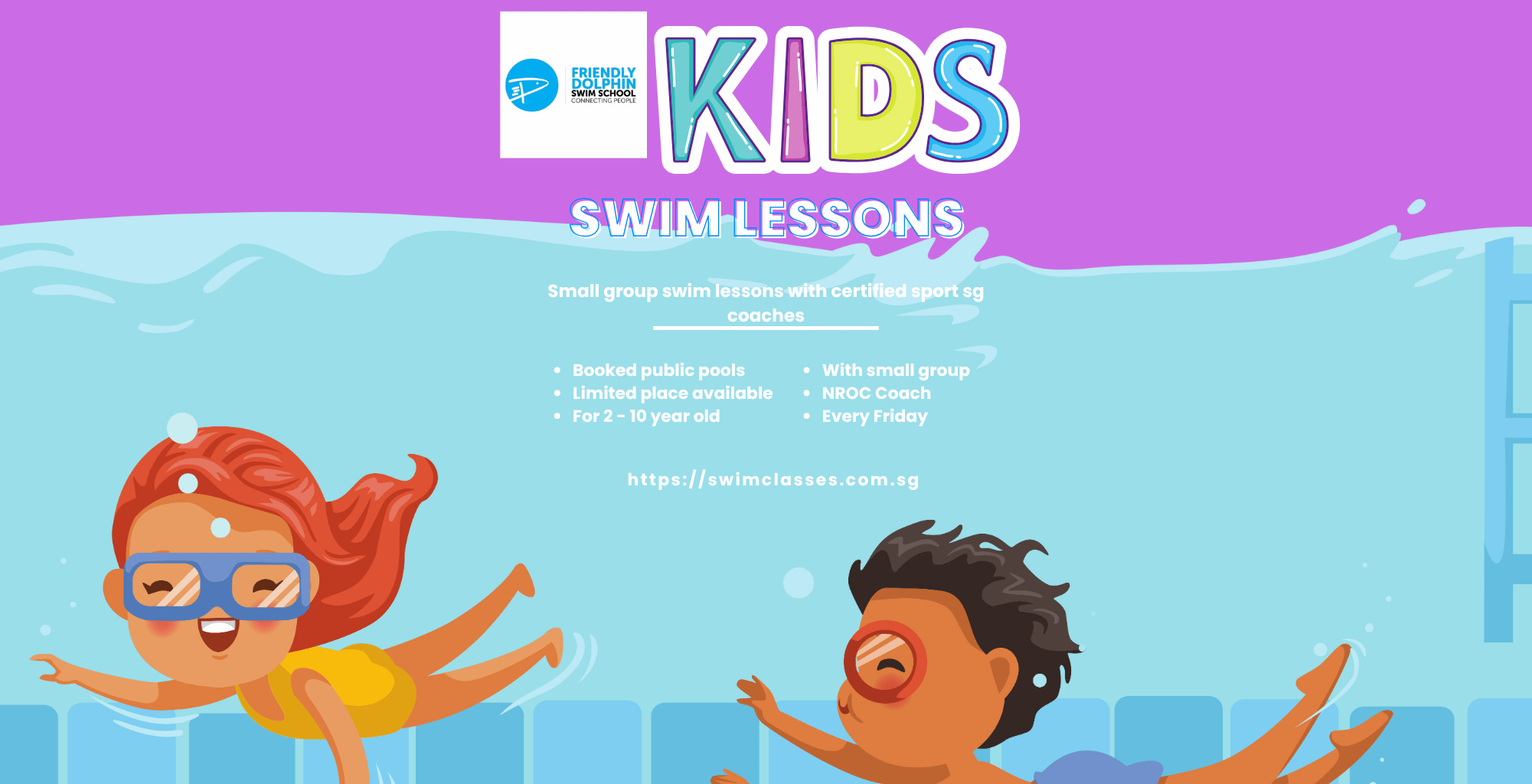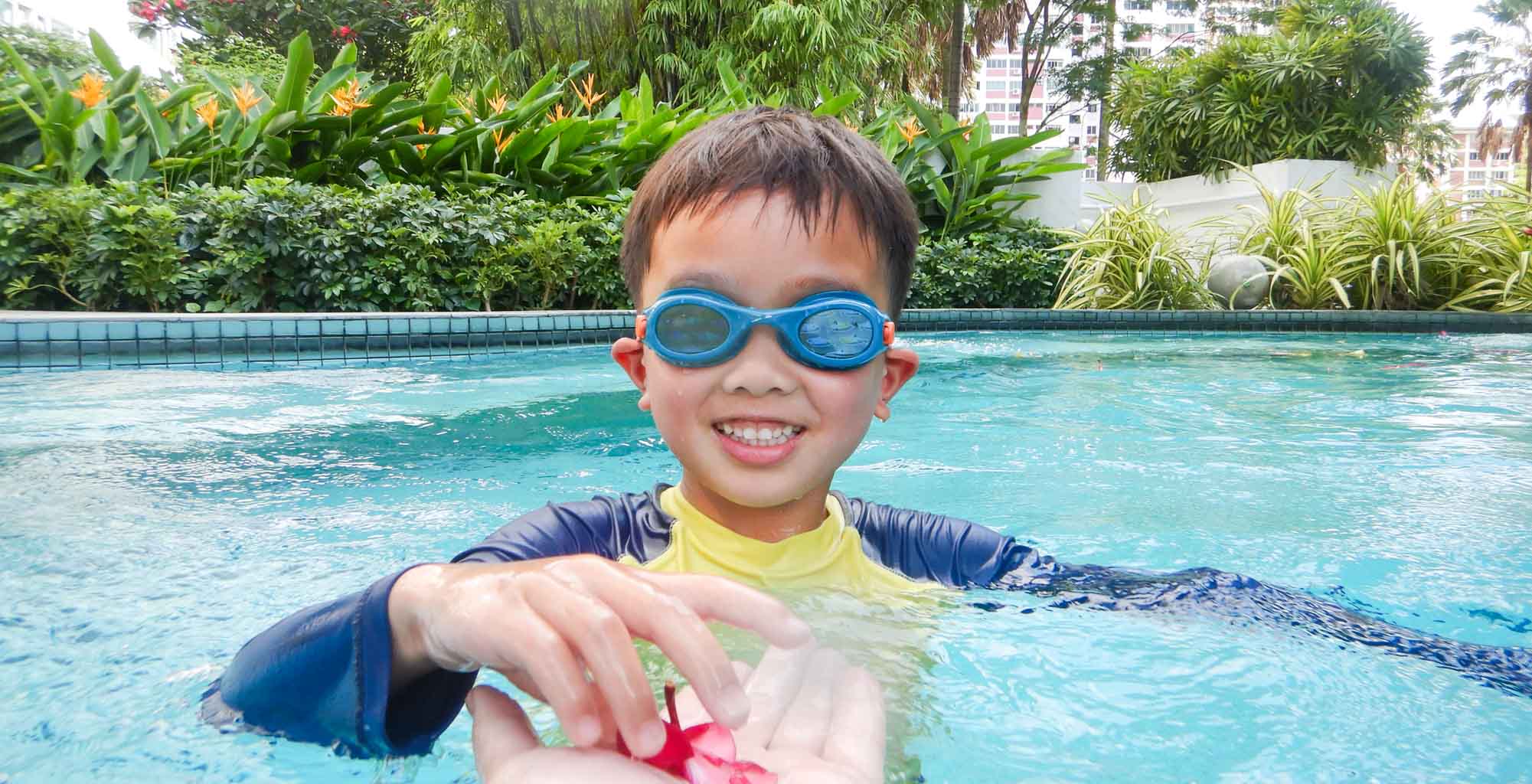Time to bring your kids for swimming!
- Emphasize the many advantages of swimming for children, including better physical health, knowledge of water safety, and boosting self-esteem.
- Foster a pleasant swimming environment by encouraging youngsters to swim, rewarding effort over result, and making swimming a joyful activity.
- To help kids become at ease and self-assured in the water, use moderate water exposure strategies such as water play, bathtub activities, and a careful introduction to pools.
- To make swimming joyful and skill-building for kids exciting, involve them in games like pool parties, water races, and diving for toys.
- Think about how valuable it is for a youngster to get skill development, safety teaching, and structured coaching from a professional swimming instructor.
- As youngsters gain confidence and competence in the water, you may foster a love of swimming in them by implementing these strategies and recommendations into your teaching methods.
Benefits of Swimming For Kids

Physical Well-Being
- Kids who swim benefit from increased strength, flexibility, and endurance, as well as improved physical fitness. It works all the major muscle groups in the body. Frequent swimming lessons can enhance cardiovascular health and help kids build strong muscles.
- Builds muscle and improves general physical well-being.
- Swimming benefits the body and make it more flexible and encourages improved motor coordination.
- Increases children’s stamina and endurance.
Social Skills
As children interact with their classmates in swim training, swimming helps them develop social skills. It promotes cooperation, communication, and teamwork. Kids get to know how to help each other out, form friendships, and acquire vital social skills that help them in many areas of life.
- Promotes peer collaboration and teamwork.
- Improves communication abilities through social contact.
- Increases children’s self-esteem and confidence.
Awareness of Safety
By teaching children the vital water safety skills that can avert drowning events, swimming raises children’s awareness of safety. Kids learn to identify danger, stay safe near water, and react appropriately in an emergency. These abilities are essential to protecting kids’ safety around water.
- Teach essential water safety techniques to help avoid mishaps.
- Raises awareness of possible dangers related to activities in the water.
- It gives kids the information they need to deal with emergencies responsibly.
Independence and Confidence
Kids learning to swim at a young age fosters independence and confidence in the child. As they grow increasingly accustomed to the water, they acquire a sense of freedom vital to their growth. Acquiring new skills gives them a sense of accomplishment that boosts their self-esteem.
Early Engagement with a Lifelong Skill
Early swimming instruction provides a strong foundation for future swimming prowess. Many kids who start swimming early become proficient swimmers, which is a lifelong talent and a healthy way to exercise.
Positive Swim Environment

Prepare Safe Area
- Assign a designated swimming area that is kid-friendly and secure. Make sure the swimming area or pool is kid-friendly, with shallow ends for novices and enough safety gear on hand.
- Children can communicate worries more easily when their feelings about swimming are discussed openly. You can take quick care of any problems by fostering an atmosphere where children feel at ease talking about their anxieties or fears.
Engaging Equipments
- To enhance the visual appeal of the event, wear vibrant and eye-catching swimwear. Kids can be encouraged to participate in swimming by wearing brightly colored swimsuits, floaties, and goggles, which can add excitement to the activity.
- A setting that is conducive to positivity is greatly enhanced by swim instructors. A confident swimmer and goal-setter are two things that kids can learn from a strong role model. Select teachers who value water safety above all else and are gentle and encouraging.
Organized Education
Formal or private swimming classes taught by certified teachers provide structured learning conditions. They offer individualized private swim instruction based on each child’s needs, guaranteeing steady improvement. The primary goal of swimming teachers is to impart correct technique across all skill levels. This method strengthens movement efficiency and safety in the water, providing a solid basis for developing into proficient swimmers.
Social Interaction
Children can socialize with their classmates during class, which promotes team spirit and healthy rivalry. Children who engage in social contact are not only motivated to excel in their swimming talents but also find learning to be fun.
- Fosters unity
- Promotes cordial rivalry
Rhythm and Music
Incorporate music and rhythm into swimming games to create a lively and enjoyable atmosphere. Enhance the dynamic and engaging experience of swimming for youngsters by playing energetic melodies while they practice their strokes or encouraging them to swim to the beat.
Obstacle Courses
Create obstacle courses in the pool to test children’s swimming abilities while providing them with entertainment and stimulation. Incorporate exercises such as crawling under floaties, diving through hoops, and balancing on floating mats.
Themed Swim
Create imaginative swim days, like mermaid or pirate days, to spark kids’ enthusiasm in the water. To make each session entertaining and different, encourage kids to create activities that fit the selected concept and dress in accordance with the theme.
Familiar Items and Play
- Children should be introduced to water play gradually; begin in shallow areas and work your way up to deeper water. Thanks to this method, They gain confidence and can adjust to their surroundings.
- Familiar toys or objects can provide comfort and security during water immersion. Kids are more likely to appreciate water activities when associating them with fun and familiarity.
- Frequent, quick trips to the beach or pool are crucial for gradually gaining comfort and self-assurance. Regular exposure enhances children’s ability to survive in the water and helps them adjust to various water situations.
Gradual Progression
- Begin by working in shallow regions.
- Present well-known toys
- Plan frequent trips.
Learn Proper Kneeling Dive
When diving, the hands go under the water first, then the head, trunk, then legs. It’s challenging for many pupils to get into the water upside down. Make sure pupils can recover from deep water, maintain a streamlined position, and have good listening skills before starting diving classes. This will help minimize rash and impulsive entrances into risky pool regions. The objective is to use their hands to break the water’s surface and then use that same location to let the rest of their body in. Diving instruction needs to be given by a qualified diving teacher in a pool that is at least nine feet (2.7 meters) deep. It is never appropriate to teach diving in an above-ground pool.
Kids Can Benefit from Swimming as Long as Safety is Practiced!
Kids can get several health benefits from swimming, including improved mental and physical health. You can create a lifelong love of swimming in youngsters by creating a positive environment, introducing them to the water gradually, having fun with activities, and enrolling them in professional instruction.
Recall that the most important thing is to ensure their safety and enjoyment at every stage. Encouraging your children to swim not only gives them useful life skills but also builds self-discipline, confidence, and a sense of achievement. Take advantage of these pointers, play in the water with your kids, and see how they grow.



